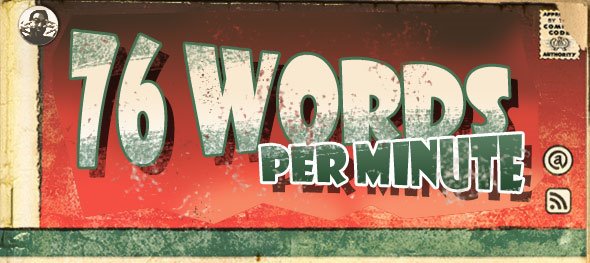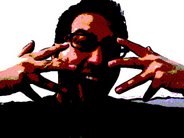If you haven't seen it already, please click on over to the full trailer for Richard Linklater's new flick, A Scanner Darkly . If you've already seen it, click again and take another look . This adaptation of Philip K. Dick's early science fiction novel looks amazing in its final stages of animation, but according to Wired , the road traveled was not a cake walk. Then again, what foray into the realm of two-dimensional animated features really is.
The first of Mr. Linklater's rotoshopped features, Waking Life, tended towards surrealism; and while Scanner does carry the same look, there's less surreality than unreality when it comes to the look of the film. The article notes how the structure of the film's production fell apart soon after it started due to the lack of visual cohesion. The individual look of characters changed from scene to scene and after a great deal of debate, the axe fell and most of the original team was let go. What I find interesting to note, and what seems to be a no- brainer to some, is the adoption soon thereafter of the Disney model of animated features. Small teams dedicated to individual characters rather than scenes perform the duties in an efficient and workmanlike manner. Although the central vision of the supervising animator may have been lost, the director was able to maintain his own vision more efficiently.
Let's delve a bit further now, shall we? I consider this classic style of animation a proven model of the business and it's no wonder its used so liberally throughout all two-dimensional animation houses. From Warner Brothers to Dreamworks, the Disney Model works wonders. In the realms of computer generated imagery, however, things are somewhat different. Take the leading company at the moment, Pixar, for example. While there are supervising animators for all the characters, they aren't necessarily the animators of the character in every scene. Instead, they are the lead designers/modelers of a wire frame beast set loose in the offices to be plugged into a scene. This scene is then under the direction of another animator, who's then under the gun to execute yet another brilliant piece of character-driven theater. This lends easily again to that uniform look all animation strives for, but also is executed in a manner in which the characters can interact with each other more naturally than if they were animated alone.
Now if we then take into account the Japanese method of animation versus the Western method, things get even more interesting. The animation style itself is obvious, with more adult themes and more technical wizardry, but what isn't obvious is how the end result is achieved. The main difference I'm talking about happens to be in the voice acting. Whereas Western animation houses will record the voices and then animate to the actors performances, Japanese traditional style dictates that the animation is completed first, with the voices then being recorded in post. One might argue that the Western style is superior, as the characters are more like the actors themselves and therefore are more organic and believable. Yet it can also be argued that once again, the singular artistic vision is more cohesive when the animation is fully realized before voices are put to character.
I suppose what is really key to all these scenarios is yet again, that dedication to fully-realized and three-dimensional characters the viewer can believe in. The Pixar films, early Disney films, and the most popular of Anime all have it. Perhaps I wax too philosophical about this subject, but it's something that can be applied incorrectly if not coupled with a compelling storyline. Think of all your favorite movies, favorite books, and even your favorite video games if you have any. What it does take outside of these qualities, is always one person to make it all happen.
I'll have more to say about this movie, once it's released and watched. Stay tuned?
Subscribe to:
Post Comments (Atom)


2 comments:
i see ya got my email =)
After seeing the trailer a couple of weeks ago, I totally forgot about it. The new Wired issue hasn't come in the mail yet, but the link reminded me they had the cover story. Good stuff.
Post a Comment